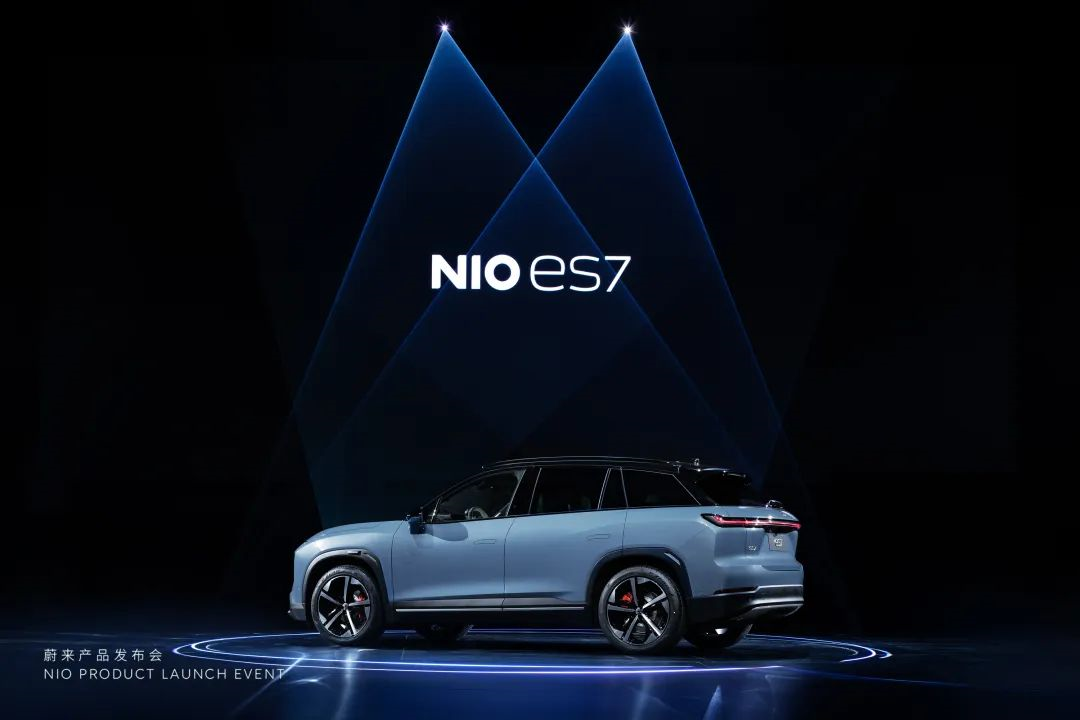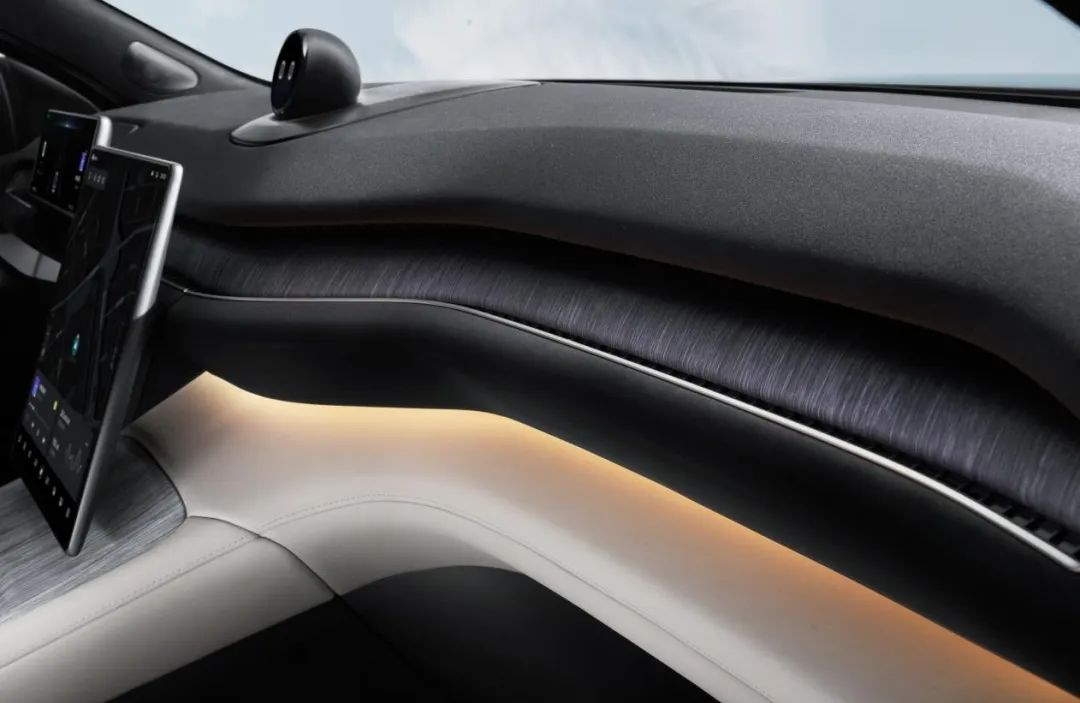Author: French Fries Fish
As the saying goes, “the best is always saved for last”.
The second topic of the evening is, of course, the NIO ES7.
Without further ado, let’s take a look at the prices for this new release:
NIO ES7 is available in 3 versions:
-
The 75 kWh version is priced at 468,000 RMB when purchased outright, and BaaS battery rental solution with a price of 398,000 RMB and an additional battery rental fee of 980 RMB per month.
-
The 100 kWh version is priced at 526,000 RMB when purchased outright, and BaaS battery rental solution with a price of 398,000 RMB and an additional battery rental fee of 1680 RMB per month.
-
The First Edition is priced at 548,000 RMB when purchased outright, and BaaS battery rental solution with a price of 420,000 RMB and an additional battery rental fee of 1680 RMB per month.
Also, NIO is expected to start delivering ES7 in the third quarter of this year.

To me, the NIO ES7 is a car model that breaks with convention. It is the first car model that NIO did not announce at the NIO Day event, and it is also the fastest model that NIO has launched from production to delivery.
In NIO’s product lineup, the ES7 also has a special significance.
NIO says “this is their most comfortable SUV, the fastest SUV, and their most intelligent SUV”.
NIO’s Vision of Comfort
The NIO ES7 is 4912 × 1987 × 1720 mm in size, and from a size perspective, the ES7 is positioned between the ES6 and ES8.
However, in NIO’s eyes, “as the trend toward vehicles becoming mobile living spaces becomes more and more apparent, the experience of intelligent cabin design becomes increasingly important.”
Therefore, NIO’s consistent “second living room” cabin design concept has been further interpreted in the ES7.

Upon approaching the car door, the hidden door handle automatically pops out, the door pre-opens when the handle is touched. The revered sense of ceremony, luxury, and comfortable ambiance begins to take hold, similar to the “touch to open” experience of the ET7, which may become one of NIO’s signature features in the future.
When the car door is opened, a staggered center console comes into view.
NIO believes that the higher engine hood of an SUV often makes its center console appear overly bulky, so they adopt a dual IP design style and divide the center console into upper and lower parts to break this sense of bulkiness.In my opinion, this is clearly a three-layer design: the hidden line that conceals the air outlet of the air conditioner draws the first dividing line on the central console, and the hidden LED ambient light strip below, which changes with the light/dark color of the interior, forms the second dividing line.

This is not nitpicking, in fact, I agree with NIO’s design philosophy. The distinct and tough lines can indeed balance out the overall round shape of the central console. Especially when these lines appear in multiple forms such as physical lines, colors, and light and shadow, the sense of weight in the car interior will really be broken by some pleasing sensory atmosphere.
When a gentle scent is pervasive in the atmosphere, I believe most people will let down their guard and enter a lazy mode.
The reason why so many people are addicted to the feeling of laziness is only because the next sense that laziness brings us is comfort.

The comfortable atmosphere has already been set. Now it’s time for the seats to take over this comfort.
NIO said that the ES7 uses the brand new Ultra Fit comfortable seats, which adopt a two-layer foam design and comfortable sponge, and higher resilience will balance both comfort and support.

Meanwhile, NIO also uses the B-GREEN coffee bean tanning process on the Nappa leather. As NIO describes, this process can 100% eliminate heavy metals such as formaldehyde, acid, and chromium. This means that the Nappa leather on the ES7 will become more environmentally friendly and healthy.
Unfortunately, we in Beijing can only watch through the screen, and cannot understand where the “Ultra” is in “Ultra Fit” with our bottom for now, but it is easy to get the rear 6-way electric adjustment.
Especially the backrest of the rear seats also supports stepless electric adjustment from 23°-31°, which should solve the problem of “the short complain it’s too flat, and the tall complain it’s too steep”.

Lines, light and shadow, touch… In fact, there are also familiar 7.1.4 Dolby panoramic sound and intelligent aromatherapy, which are the immersive second living room experience that NIO hopes to convey to the users with the ES7.
NIO’s fastest SUVWhen I heard the words “most comfortable” and “fastest” together describing the same car, I was a bit in disbelief. In my subconscious, they seem like a pair of antonyms.
Luckily, I soon convinced myself.
NIO wants to create the most comfortable SUV, that’s correct. NIO says this is their fastest SUV in history, which is also unquestionable.
Since the NIO EP9 refreshed the Nürburgring production car lap record in 2017, high performance has become an indispensable part of the NIO brand DNA.
The NIO ES7 is equipped with a front 180kW permanent magnet motor and a rear 300kW induction motor, with a maximum power of 480kW and peak torque of 850Nm, which is a familiar set of parameters.
The 0-100km/h acceleration of 3.9 seconds is also a well-known result. The only unfamiliar part is that the vehicle model carrying these performance figures has become an SUV.
This is the new height of NIO’s high-performance genes expressed in SUV models.
Behind the three-second club is naturally the first achievement of NIO’s second-generation high-efficiency electric drive platform.
Let’s review again. Of course, if you don’t care about the principles and only care about the effect, you can skip to the next paragraph to see the results. NIO uses silicon carbide modules on the 180kW permanent magnet motor. Silicon carbide is the most typical third-generation wide-bandgap semiconductor material, which has the characteristics of fast switching speed, high turn-off voltage, and high temperature resistance.
The permanent magnet motor with silicon carbide modules reduces overall power loss by 4-6%, and also significantly improves the efficiency and power density of the motor drive system. In other words, silicon carbide makes the motor more energy-efficient and smaller in size.
When driving fast, naturally you need to be able to brake quickly as well.
Brembo’s four-piston fixed calipers are standard on the NIO ES7 braking system. For friends who are familiar with performance, I believe that when they see the letters “Brembo,” they can even skip over the rest of the parameters, based on their trust in this brand.
It’s up to you whether to read it or not, but it’s up to me whether to write it or not. Compared with the conventional cast iron floating clamp, this set of four-piston fixed clamp reduces the weight by 30% and increases the friction pad area by 30% compared with the same size single-piston caliper when equipped with a 355mm large ventilated brake disc and high-performance NAO friction pad, giving the NIO ES7 a 33.9m 100-0 km/h braking distance.
As for the suspension, we never have to worry about NIO’s materials. The air suspension and CDC intelligent dynamic damping system are standard across ES7. What we should pay attention to is the suspension tuning under the control of the NIO ICC chassis domain controller, and how it performs on the ES7. If you ask what NIO ICC is, please click the video below to let Chang explain it to you.
I may just be at Versailles
Speaking of ES7’s intelligence, if you’ve seen ET7, you might think it’s a bit “mediocre.”
Look at the Aquila-shaped sensor components on the top, NIO Aquila sensor system should not be underestimated.

Yes, ES7 is equipped with a total of 33 high-performance sensors, including 1 1550mm laser radar, 7 8 million pixel cameras, 4 3 million panoramic cameras, 5 millimeter wave radars, 12 ultrasonic radars, 2 high-precision positioning units, 1 vehicle-road coordination perception, and 1 enhanced driver’s perception.

These sensors generate 8G of data per second, which is handled by the NIO Adam supercomputing platform.
The ES7 is equipped with four NVIDIA Orin X chips, providing a processing power of 1016TOPS and capable of processing 6.4 billion pixels per second.
Are you thinking that I am just trying to write as much as possible? Well, I admit that I am. After all, as an intelligent car, I cannot write the important intelligent part. Please refer to the NIO ET7 for that.
However, the reason I started with this lackluster paragraph is not because it is really boring. In fact, it is the exact same as what is on the NIO ET7, but it also represents the ceiling of automatic driving hardware configuration in currently manufactured cars.
But the thing that really interests me is the “hidden” Easter egg on the ES7.
Camping is very popular this year, and electric cars are definitely the best companion for suburban camping. After all, a pure electric car is like a giant charging treasure when you stop it.
Therefore, many electric cars have released camping modes, and the ES7 is no exception. The 3kW external power output is not surprising, but a hidden electric towing hook is rare.
The NIO ES7 is one of the first domestically certified passenger cars that can legally tow a caravan on the road. Therefore, the ES7 is equipped with a hidden electric trailer hook and a dedicated towing mode, with a maximum total weight of 2 tons and the ability to power the caravan.
When everyone is still sleeping in their tents, NIO ES7 owners may already be rubbing their sleepy eyes and getting out of their caravans.
“What is a tent? Why do people use tents for camping? Isn’t a caravan much better?”
This article is a translation by ChatGPT of a Chinese report from 42HOW. If you have any questions about it, please email bd@42how.com.
